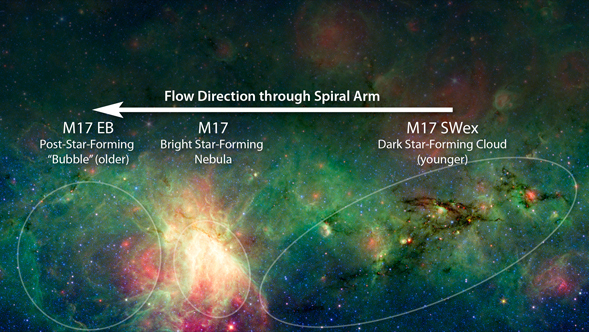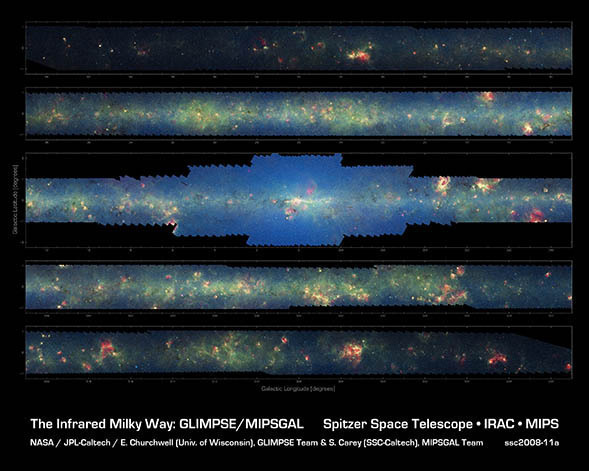E
EarthlingX
Guest
Wiki : Spitzer Space Telescope
http://www.spitzer.caltech.edu : Spitzer Spies a 'Flying Dragon' Smoldering with Secret Star Birth
The Spitzer Space Telescope (formerly the Space Infrared Telescope Facility, SIRTF) is an infrared space observatory launched in 2003. It is the fourth and final of NASA's Great Observatories.
http://www.spitzer.caltech.edu : Spitzer Spies a 'Flying Dragon' Smoldering with Secret Star Birth
07.07.10
By Adam Hadhazy
NASA's Spitzer Space Telescope has revealed a cosmic cloud shaped like a flying dragon that has a secret burning behind its dark scales.
Though appearances deceive, stars are forming in this cloud about as fast as in a neighboring, dazzling nebula illuminated by giant stars. But no similar stellar behemoths have yet emerged to set the dragon's dusty innards aglow.
"We believe we've managed to observe this cloud in a very early phase of star formation before its most massive stars have ignited," says Matt Povich, an astronomer at Penn State and lead author of a study published April 21 in The Astrophysical Journal Letters.
This strange starry absence in the dark cloud, dubbed M17 SWex, speaks to the mysteries surrounding the birth of the heftiest stars in the universe.
Perhaps these rare, massive stars form after typical stars do, or when these smaller cousins infrequently collide - or maybe an outside "trigger" of some sort is needed. To wit, a wave of massive star formation, possibly caused by the crossing of a grand spiral arm of the Milky Way galaxy, appears to be rippling through M17 SWex's entire region.
This surge, however, has not yet reached the beastly cloud, establishing M17 SWex as a compelling place to explore the origin of giant stars. "This flying dragon of M17 SWex might carry with it important clues about how massive stars ever come into being," says paper co-author Barbara Whitney, a Senior Research Scientist at the Space Science Institute in Boulder, Colorado.













